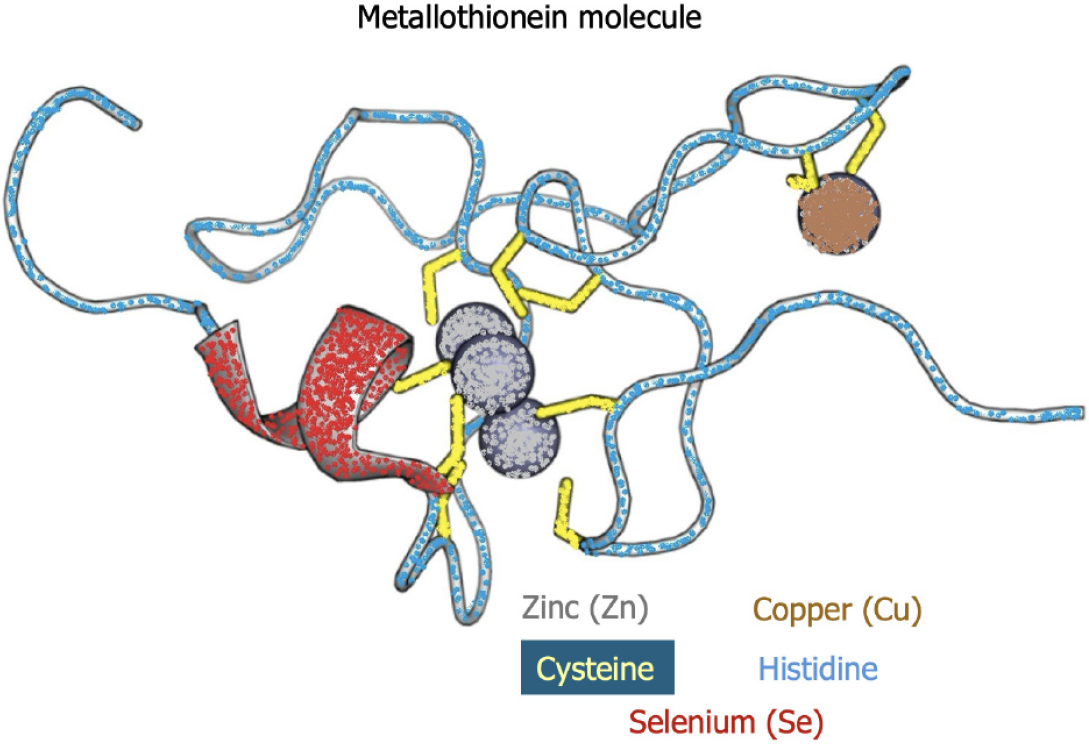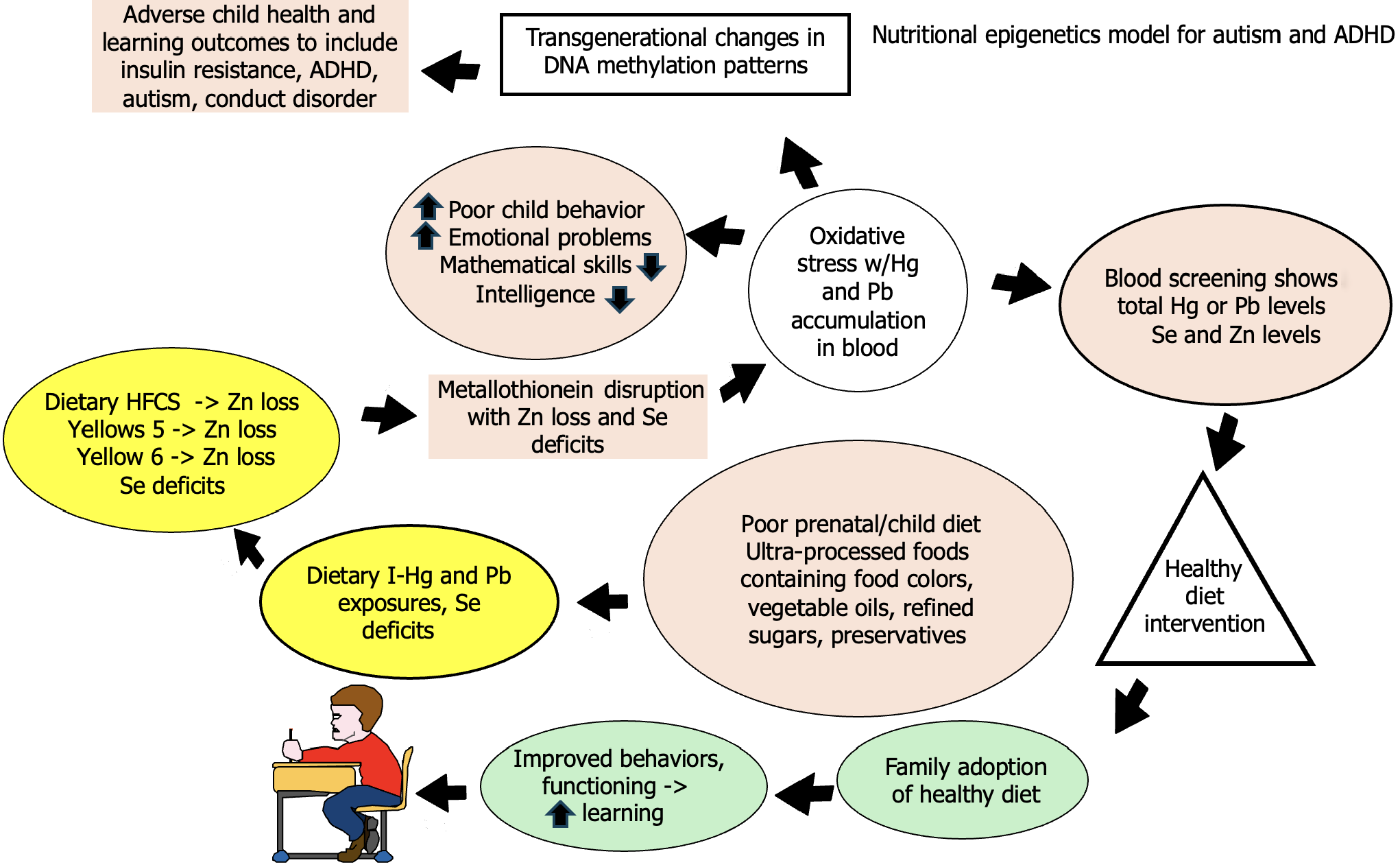Copyright
©The Author(s) 2025.
World J Exp Med. Jun 20, 2025; 15(2): 101555
Published online Jun 20, 2025. doi: 10.5493/wjem.v15.i2.101555
Published online Jun 20, 2025. doi: 10.5493/wjem.v15.i2.101555
Figure 1 Metallothionein protein molecule.
Figure shows three zinc atoms, and one copper atom bound to yellow cysteine residues which connect to blue histidine molecules. Selenium, represented by red, plays a key role in reducing oxidative stress from the heavy metals that bind with and are transported through the excretion process by metallothionein proteins. MT: Metallothionein; Zn: Zinc; Cu: Copper; Se: Selenium.
Figure 2 Nutritional epigenetics model for autism and attention deficit/hyperactivity disorders.
Figure shows a simplified version of the nutritional epigenetics model. Poor prenatal diet of excessive ultra-processed food intake results in the consumption of food colors, vegetable oils, refined sugars and preservatives. These food ingredients contribute to mercury (Hg) and lead (Pb) exposures and deficits in nutrition such as selenium and zinc losses. Zinc loss and selenium deficits disrupt metallothionein protein production which leads to the bioaccumulation of Hg and Pb in the blood. These heavy metals create oxidative stress and symptoms associated with child behavioral and learning disorders. Oxidative stress impacts DNA methylation patterns creating adverse child health and learning outcomes in the next generation. A healthy diet, free of ultra-processed foods, may reduce Hg and Pb levels and symptoms associated with behavioral and learning disorders (e.g., autism, attention deficit/hyperactivity disorders). MT: Metallothionein; ADHD: Attention deficit/hyperactivity disorders; HFCS: High fructose corn syrup; Zn: Zinc; Se: Selenium; Hg: Mercury; Pb: Lead.
- Citation: Dufault RJ. Biomarkers for tracking metabolic changes pre-post nutritional epigenetics diet/intervention to prevent autism and attention deficit/hyperactivity disorders in children. World J Exp Med 2025; 15(2): 101555
- URL: https://www.wjgnet.com/2220-315x/full/v15/i2/101555.htm
- DOI: https://dx.doi.org/10.5493/wjem.v15.i2.101555










